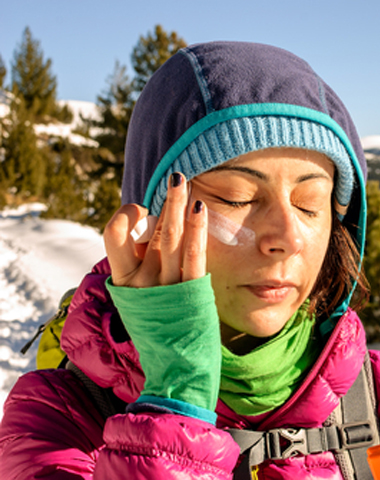Eyelift surgery, formally known as blepharoplasty, targets sagging, droopy skin under the eyes and contributes to a more refined and smooth appearance. Whether completed on the upper or lower eyelid, the surgical procedure requires a series of miniscule incisions that remove fat tissue contributing to saggy eyes. Some individuals are demotivated by the nature of this minor surgery and are hesitant to take the step towards rejuvenation. Blepharoplasty is a successful surgery. However, sometimes persuasion is best served on a dish from previous patients. As such, we have combined some feedback from individuals who had eyelift surgery to help you determine if it’s the best decision for you.
a series of miniscule incisions that remove fat tissue contributing to saggy eyes. Some individuals are demotivated by the nature of this minor surgery and are hesitant to take the step towards rejuvenation. Blepharoplasty is a successful surgery. However, sometimes persuasion is best served on a dish from previous patients. As such, we have combined some feedback from individuals who had eyelift surgery to help you determine if it’s the best decision for you.
Solving a Hereditary Problem
A woman, who credits her drooping as to heredity, arrived at the surgery centre at 6:30 a.m. and returned home at 10:00 a.m. On the same day she expressed, “It’s crazy how something so big and life changing can take so little time”. Having been put under general anesthesia she admitted the worse part was getting the IV put into her arm. Following the surgery, she was in great spirits and had mild swelling, which is normal. Her words: “Overall it is a great improvement and I hope that it only gets better!”
The Wait is Over
A patient waited seven years before committing to blepharoplasty and “not without hesitation”. After waking up from the anesthesia, she mentioned that she could feel her eyes leaking down her face, but despite how it looked, she did not need to take the prescribed Endone as the pain was not as bad as it look, immediately after surgery. In fact, she expressed that, surprisingly, she was not in much pain at all.
Awaiting Surgery
A 51 year-old struggled with droopy eyes during her thirties. At 51, she finally decided to book a consultation. Her fear of surgery has kept her stagnant. Though she has not completed blepharoplasty as yet, she is encouraged. She states, “the more I look at before and after photos of people who have had eye lid surgery, I feel that 99% of these individuals look BETTER, and I feel it is something that I should do.”
I love my face; I just want the bags gone
Being comfortable in your skin is so important. A patient who had bilateral lower blepharoplasty expresses, “I’m so happy with the improvement and I had a great surgeon…I want to keep my eye shape, but I just want the bags gone”. She loves the results.
Deciding whether blepharoplasty is for you can be challenging and it shouldn’t be taken lightly. Some of the patients above were hesitant. Take advantage of consultations, ask your dermatologists and surgeons as much questions as you can, and make the best decision for you.

 lost in the sauce. At Rao Dermatology, we don’t want you to sacrifice one important thing for another and jeopardize your self-fulfillment. Instead, we want you to have it all and that includes health skin. The following quick tips will help you achieve healthy-looking skin with very little time and effort. All you need is commitment and consistency!
lost in the sauce. At Rao Dermatology, we don’t want you to sacrifice one important thing for another and jeopardize your self-fulfillment. Instead, we want you to have it all and that includes health skin. The following quick tips will help you achieve healthy-looking skin with very little time and effort. All you need is commitment and consistency! result in a huge loss of in confidence. While some scars are inevitable and necessary, others can be avoided. Understanding how to be proactive in scar care can have a significant impact on its presence and permanency.
result in a huge loss of in confidence. While some scars are inevitable and necessary, others can be avoided. Understanding how to be proactive in scar care can have a significant impact on its presence and permanency. many people are still uncertain about neuromodulators. As a result, we have compiled a list of the most frequently asked questions to help you decide whether a neuromodulator is for you.
many people are still uncertain about neuromodulators. As a result, we have compiled a list of the most frequently asked questions to help you decide whether a neuromodulator is for you. is, every season is appropriate for sunscreen. Your skin needs protection all year round despite the infrequency of sunlight and we’re sharing just why.
is, every season is appropriate for sunscreen. Your skin needs protection all year round despite the infrequency of sunlight and we’re sharing just why. because the surgery requires minimal, local or general anesthesia and minor surgical incisions, individuals are a little hesitant and question whether the procedure is really in their best interest. Fortunately, if you decide you are not ready to commit to blepharoplasty there are alternative non-surgical treatments to minimize and eliminate the torment of saggy eyelids.
because the surgery requires minimal, local or general anesthesia and minor surgical incisions, individuals are a little hesitant and question whether the procedure is really in their best interest. Fortunately, if you decide you are not ready to commit to blepharoplasty there are alternative non-surgical treatments to minimize and eliminate the torment of saggy eyelids. easiest preservative of energy and many people rely on its effects for productivity. But what is doing to your skin? Does it have any effect at all? Well, coffee has been a subject of study for quite sometime, particular with respect to skin cancer. Specifically, caffeine has been shown to prevent ultraviolet radiation-induced carcinogenesis and prevent the growth of melanoma cells.
easiest preservative of energy and many people rely on its effects for productivity. But what is doing to your skin? Does it have any effect at all? Well, coffee has been a subject of study for quite sometime, particular with respect to skin cancer. Specifically, caffeine has been shown to prevent ultraviolet radiation-induced carcinogenesis and prevent the growth of melanoma cells. therapeutic advantages of the surgery. As a general background, entails the aspiration of adipose cells through small incisions. “The procedure preserves neurovascular structures while maintaining fluid balance and minimizing patient discomfort”. In evaluation of a 2015 research published in Annals of Plastic Surgery, we will look at some of the more functional and therapeutic outcomes of liposuction.
therapeutic advantages of the surgery. As a general background, entails the aspiration of adipose cells through small incisions. “The procedure preserves neurovascular structures while maintaining fluid balance and minimizing patient discomfort”. In evaluation of a 2015 research published in Annals of Plastic Surgery, we will look at some of the more functional and therapeutic outcomes of liposuction. spectrum of causes. In some instances, it can be attributed to bites, stings, or dry skin and in others, it can derive from a series of skin conditions such as dermatitis or eczema. In the earlier stages of itching it is usually a challenge to pinpoint a definitive cause for the discomfort. For these moments, we have compiled a list of liquid remedies that aim to bring effective relief. However, in cases where itchy skin continues overtime, it is best to consult a dermatologist immediately as there is a risk that it can be serious.
spectrum of causes. In some instances, it can be attributed to bites, stings, or dry skin and in others, it can derive from a series of skin conditions such as dermatitis or eczema. In the earlier stages of itching it is usually a challenge to pinpoint a definitive cause for the discomfort. For these moments, we have compiled a list of liquid remedies that aim to bring effective relief. However, in cases where itchy skin continues overtime, it is best to consult a dermatologist immediately as there is a risk that it can be serious. with makeup tricks and cosmetic surgery. While this method may work for some, others intend for a natural glow. We’re sharing our five natural glow tips to give your skin that extra boost. If you can commit to these daily routines and be consistent, you can count on a visible difference.
with makeup tricks and cosmetic surgery. While this method may work for some, others intend for a natural glow. We’re sharing our five natural glow tips to give your skin that extra boost. If you can commit to these daily routines and be consistent, you can count on a visible difference.
